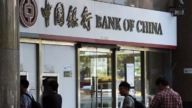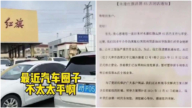【新唐人2012年6月26日讯】22号,《纽约时报》以大篇幅报导有关“中国数据面具下的深度放缓”,报导说,中国经济放缓的问题可能比数据表面严重。而各级官员在十八大领导人换班前夕,争相美化数据,等待晋升与调职。但中国著名的企业高管及西方经济学家们表示,有证据表明,中国地方和省级官员在伪造经济统计数据,掩盖了中国大陆经济问题的真正严重程度。
《纽约时报》的报导说,关于中国经济数据的质量和准确性的问题是长期的,但现在正在提出的问题是不寻常的。今年是自1989年以来的首次经济急剧放缓,正好在中国最高领导层十年一次的转换。
《纽时》以过剩的煤炭为例,说明中国的经济严重放缓。同时,根据不愿透露姓名的高管和经济学家的描述,地方和省级官员伪造经济统计数据,为了在十年一次的领导层换届时,等待晋升与调职。
其中,企业高管和经济学家们说:事实上,一些城市和省份的官员在拔高经济产出、企业收入、企业利润和税收。那些官员敦促企业采用不同的账本,以展示企业的业绩及纳税在提升,事实上,这些都不存在。
谢田:“中国企业有两套统计数据,或者是造两本账,早已经是公开的秘密了,中国的国有企业、中国的中小企业,中国的国有企业在欺骗投资大众,欺骗外国投资者,中国的中小企业、私人企业,它因为逃税漏税也在作两本账。”
电力的生产和消费数量,已被认为是经济活动的警示信号。
谢田:“(能源消耗)包括火力发电、水力发电、核能,和其他一些太阳能…一个是反映社会国民消费的水平,9:48所以用电数据如果是在下滑的话,第一,说明中国工业生产在急剧下滑,另外的话,如果居民消费用电也在下滑,这也说明,中国的内需—-带动经济的内需市场,也是处于非常萎缩之中。”
而报导指出,面对下跌的电力需求,发电厂用煤量减少,过剩的煤堆积在中国最大的储煤区,数量创下记录。但是,电力业高管们表示,地方和省级政府官员迫使电厂经理们不要向北京报告电力生产放缓的真实程度。
企业高管和经济学家们粗略估计:这些不准确的统计数据造成了各种经济指标被虚假夸大了1或2个百分点。这可能使非常糟糕的经济消息看上去仅仅是个坏消息。
谢田:“不发布那么惨淡的数据,这种公然作假犯罪的行为在中国居然可以消遥法外,这也是非常奇怪的事情,但是也不奇怪,共产党政府向来都是这样的,因为第一它可以只要准确的数字,也许给自己用,但是那造假的数据是为了欺骗投资大众,也欺骗国际社会。”
准确的统计数据供决策者们内部使用,而对公众及金融市场发布不那么惨淡的数据,可能有助于解释:为什么大陆央行这个月早些时候出人意料的突然降息。
《纽时》说,高盛和其他机构多年来的研究都明显表明:中国的统计员们对季度性增长数据做过处理,在经济繁荣期,低报实际增长率,在经济衰退期,夸大经济增长率。
谢田表示,央行这个月降息,恐怕是中共当局意识到经济下滑的威胁,因为如果下滑继续加快的话,将导致大量的工人失业,因此在这个情况下,突然提出“降息”,他认为跟“保增长”的策略息息相关。
采访/刘惠 编辑/周平 后制/君卓
New York Times: Chinese Data Mask Depth of Slowdown
On June 22nd, a New York Times article titled Chinese Data
Mask Depth of Slowdown reported that
the problem of China’s economic slowdown may be
more severe than economic statistics show.
It seems that Communist officials of various levels are eager
to doll up the numbers before the 18th Congress leadership exchange.
However, China’s well-known business executives
and western economists express that
there is evidence showing that Chinese local and provincial
officials are forging these economic stats,
covering up the true severity of
Mainland China’s economic problems.
The New York Times reports that the quality and accuracy
of China’s economic data have been a long term problem,
but the concerns now being raised are unusual.
This year is the first time since 1989 that a sharp economic
slowdown has coincided with the once-a-decade changeover in the country’s top leadership.
The New York Times uses excess piles of coal as an example
to illustrate China’s severe economic slowdown.
At the same according to business executive Mr. Gao and
economists’ descriptions,
local and provincial officials have faked these statistics
in order to receive promotion during the once in ten year leadership exchange.
Business executives and economists say in reality, some city
and provincial officials are overstating economic output,
corporate revenue, corporate profits and taxes.
Those officials urged businesses to use a different
accounting book in order to demonstrate an increase in corporate performance.
In reality, these reports are false.
Xie Tian: “Chinese corporations have two sets of statistics,
or they make two accounting books.
This is already an open secret, including China’s state-owned
corporations and China’s medium and small corporations.
China’s state-owned corporations are deceiving foreign and
domestic investors.
China’s medium and small corporations as well as private
corporations are also making two accounting books because of tax evasion.”
Electricity production and consumption have been considered
as a warning signal for economic activities.
Xie tian: “[Energy consumption] includes thermal power,
hydro power, nuclear energy and other solar powers…
a level which reflects the nation’s standard of living.
So if electric data is declining, then first of all it indicates
China’s industrial productions are declining rapidly.
Secondly, if consumption of electricity is also declining,
this also indicates China’s internal need –
the internal market need to lead the economic stimulation
is also in a withered state.”
Reports point out that with decreasing need for electricity,
power plants’ coal usage is reduced.
A record reaching excess of coal is stored at one of
China’s largest storage areas.
However, power sector executives express that local and
provincial government officials have forced plant managers not to report to Beijing the full extent of the slowdown.
The executives and economists roughly estimated that the
effect of inaccurate statistics was to falsely inflate a
variety of economic indicators by 1 or 2 percent.
Business executives and economists roughly estimate that
these inaccurate stats have caused a variety of economic
indicators by exaggerating one or 2 percentages.
Xie Tian: “To not publish such miserable stats, to allow this
kind of blatant fraud to go unpunished, this is a very strange thing, but it’s not that strange.
The CCP has always been this way, because first of all it
only needs an accurate number,
maybe for them to use, but those fake numbers were created
to fool investors, and to fool international society.”
Accurate stats are only used internally for decision makers,
less dismal numbers are published for the public and financial
markets. This may help to explain why earlier this month,
information of unexpected sudden interest rate cut came
out of the People’s Bank of China.
New York Times says, many years of research by Goldman
Sachs and other financial institutions show:
Chinese Statisticians have handled quarterly growth stats.
Reporting lower than actual statistics during economically
flourishing times and reporting higher figures during recession.
Xie tian expressed that the interest rate cut this month by
the People’s Bank of China may be due to the fact that the
CCP have realized the threats of economic decline.
If the decline continues to speed up,
then it will lead to the unemployment of many.
Hence it is believed the sudden cut of interest rates
is closely associated with the policy to maintain growth.



























